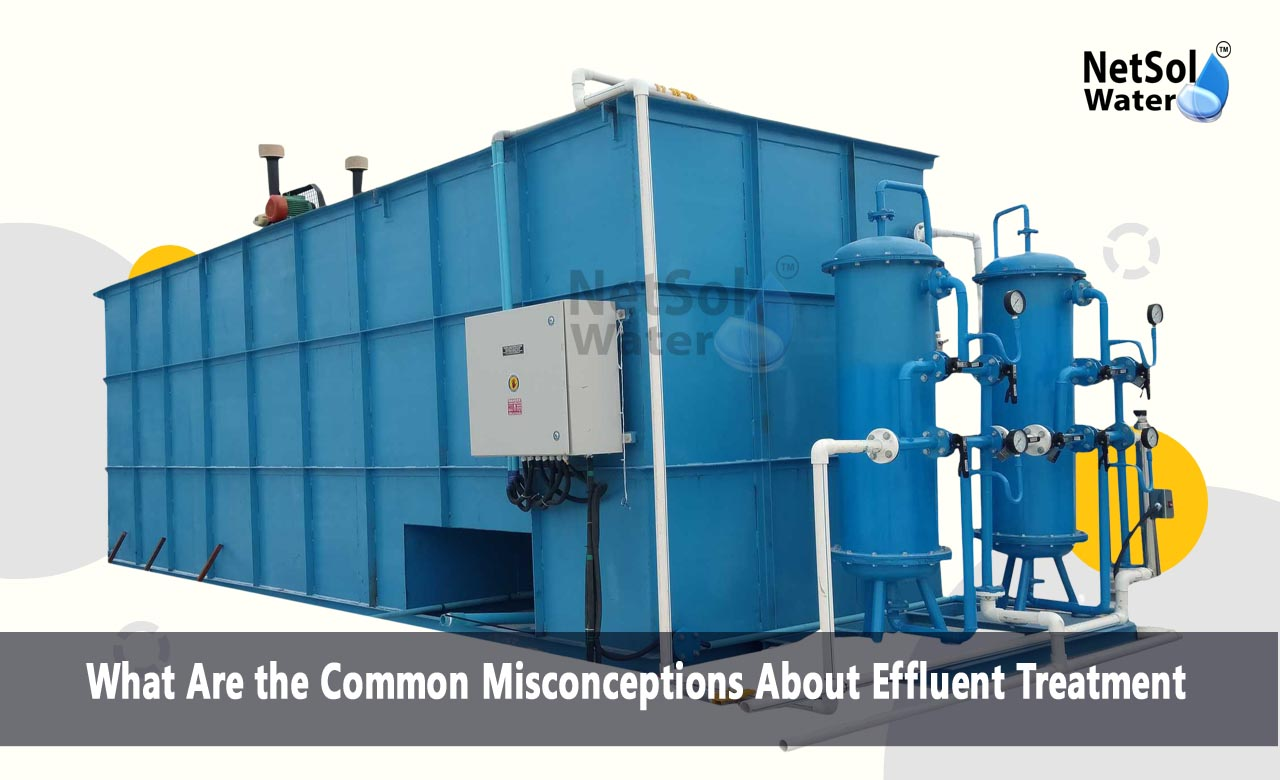What Are the Common Misconceptions About Effluent Treatment?
Effluent treatment is important for the protection of our environment and public health through the treatment of wastewater prior to its release back into nature or reuse. Yet, for a process that is of such significance, few people within industry and the general public have much knowledge of what it does. Therefore, a range of misconceptions regarding effluent treatment persist.
We are going to clarify some of the most common misconceptions about effluent treatment and tell you what's actually true.
Common Misconceptions About Effluent Treatment
Following are some of the common misconceptions about effluent treatment:
Effluent Treatment Is Only for Large Factories
The most prevalent misconception about effluent treatment is that only large industries need to consider treating their wastewater. Truth be told, even hospitals, hotels, and residential complexes that generate wastewater have to, by law, install and run ETPs.
Each sector, regardless of size, produces waste which can hurt the environment if it is not disposed of. Regulatory agencies require all emitting units, big or small, to dispose of their waste in a responsible manner.
Once it is installed, an ETP operates by itself forever
Others are of the opinion that after an ETP is put in place, it works efficiently with little or no care. This is not the case. Maintenance, operation, and occasional chemical control are required to deliver optimal performance.
It is one of the myths about effluent treatment that causes system failure, permit violations, or discharge of untreated effluent. Trained operators, regular maintenance, and system upgrade are prerequisites for any ETP to function well.
All Treated Effluent Is Safe for Drinking
Another common misconceptions about effluent treatment is that water discharged from an ETP is so pure that it is drinkable. Advanced treatment will render water extremely pure, but a majority of effluent discharged from typical ETPs is only for non-potable applications such as flushing, irrigation, or cooling towers.
This is due to the conflation of various water treatment levels—drinking water treatment is much stricter and entails further purification than what a typical ETP includes.
Effluent Treatment Is Too Costly to be Worthwhile
Some owners of facilities postpone establishing an ETP because they believe it is too expensive and does not provide returns. This is one of the misconceptions regarding effluent treatment that can prove to be hazardous both legally and environmentally.
The fact is that although initial expenses exist, costs are saved in the long run through water reuse, lower pollution fines, and enhanced brand reputation. Subsidies and tax relief for installing ETPs are also provided by several governments. The plant repays itself in the long run through cost savings and environmental regulations.
Read: Effluent Treatment Plant Manufacturer
Only Chemical Treatment Works for Wastewater
It is widely assumed that effluent can be treated effectively only by chemicals. Chemicals are involved in treatment, but biological treatment is also equally essential—particularly for decomposing organic substances.
Modern-day ETP incorporates biological, chemical, and physical treatment together to provide the desired quality of water. Depending on the type of waste, either one may be more appropriate than the other or a combination of both can be utilized.
Treated Effluent Does Not Have Any Use
One of the biggest errors industries commits is believing treated wastewater to be waste with no other use. Treated effluent, however, is a precious asset. It can be reused for:
· Landscaping and irrigation
· Toilet flushing
· Cooling systems
· Cleaning and floor washing
One of the popular myths surrounding effluent treatment is not realizing the value of reuse, particularly in regions where water scarcity is an issue. Efficient reuse not only helps save freshwater but also minimizes discharge quantities.
If It Looks Clear, It's Clean
It is wrong to judge the purity of the water treated based on its presence. It seems clear that water can still be dangerous bacteria, heavy metals or chemical residues.
It is one of the most common misconceptions about effluent treatment, as relying for the appearance can only cause unsafe discharge or reuse. Only periodic tests in a laboratory will assure water quality.
A Single Design Fits All Waste Types
All types of wastewater are unique. The flow of a food processing plant is different from a cloth dyeing plant or a pharma plant. There is no size-fit-all solution.
Each ETP should correspond to the unique contacts present in waste. Otherwise, assuming that is one of the popular myths about waste treatment, resulting in sub-optimal system performance or non-compliance.
Conclusion
Knowing about the common misconceptions about effluent treatment makes industries, building administrators and even homeowners make intelligent options about water management. Waste treatment is not a luxury or burden in any way; This is an essential and responsible aspect of contemporary operations.
As soon as individuals realize the value and importance of waste water treatment, it translates better practices, cleaner environment and better use of water resources. The most important thing is education, correct system design, maintenance, and exactly what is a waste treatment, a proper understanding of it.
Do you need an advice or assistance on selecting the best water and waste water treatment unit? We have solutions for all your problems!
Let us know your problem, our experts will make sure that it goes away.
For an assistance or related query,
Call on +91-9650608473 Or write us at enquiry@netsolwater.com



